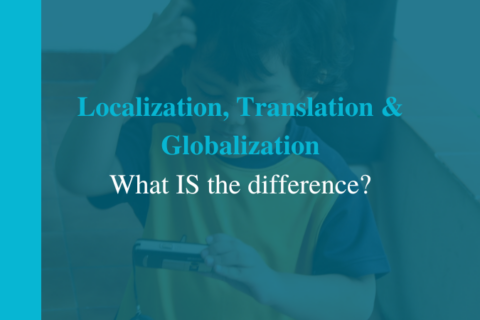Why You Should Prioritize eLearning Localization
If you’ve ever lived abroad, you know the challenges of learning a new language and fitting into a culture to which you aren’t accustomed. When a business moves operations or opens new locations overseas, the same cultural adjustment often happens. Especially if you’re expanding a business into a nation with vastly different norms, localizing your content is crucial. At Global eLearning, we’re proud to help companies worldwide optimize their eLearning materials for a new market. Our team understands the many hurdles that come with translation and localization, but we’re ready to take on your project. We’re equipped to work in over 100 languages, so don’t hesitate to reach out to us.
What Is eLearning Localization?
Localizing eLearning materials means adapting them for a new audience. Most often, we talk about localization when companies consider moving operations overseas. If you currently run a business based in the U.S. and plan to open locations in France, it’s a good idea to modify your training and marketing content to a French audience. eLearning localization specifically focuses on changing training modules and webinars to adhere to local customs and standards.
How Does Localization Differ from Translation?
While localization and translation are often mentioned together, they are not interchangeable. Translation is also a complex process, but it only has to do with adapting language. Localization, on the other hand, might include translation but will also involve an array of other tasks. Besides translation, excellent localization services will adapt graphics, images, subtitles, voice-overs, and even background scenery in video content.
Why You Should Invest in eLearning Localization
Now that you’ve familiarized yourself with the basics of eLearning localization, it’s time to implement it. But, why should any business invest in this complex process? Localization comes with a plethora of benefits and uses, many of which you can read up on in our free ebook. Here are just a few of the common reasons businesses make localization a priority:
Improve Engagement
You can hardly expect your international customers to engage with materials that don’t come in their native language. Localizing eLearning content for your employees and marketing materials for customers means they’ll better be able to engage with the products, services, and training available to them.
Inclusivity
No one likes feeling left out. Moreover, businesses typically want to appeal to as many clients as possible. By localizing eLearning materials, you can attract talent from different cultures and speakers of other languages.
Formalize Learning Goals
The point of eLearning materials is to streamline the training process. However, if you don’t have localized education for certain employees, they may not get the same thorough knowledge of the subject as other members of your staff. After professional eLearning translation, you’ll rest assured your employees in all regions are getting the same training.
Legal Compliance
In some regions of the world, particular languages are given strong preference. Some areas may even require a specific language by law.
Boost Reputation
Every business wants to promote how much they care about their clients and employees. Creating foreign language materials for overseas markets goes a long way to showing you care about making your training modules accessible for everyone. After all, a better reputation means happy, repeat customers.
What to Consider Before Beginning Localization
Now that you know why so many global companies prioritize eLearning localization, it’s time to consider how to get started. The team at Global eLearning will take care of all the nuts and bolts for you but understanding some common considerations will be crucial to receiving optimal results. Think about the following questions before beginning the localization process:
- What elements of localization will be necessary?
- Is there more than one local language?
- Will translations be longer or shorter than my original content?
- Which visuals will need to be adapted?
- How can I improve user interface?
Find Out More from Our Professional Team
The team at Global eLearning is dedicated to making your company the best it can be. We believe excellent training is key to continuing your success. As you expand abroad, we’re proud to provide localization services that will ensure streamlined, accessible training modules for all your employees. Whether you have a webinar you’d like to translate to Spanish or an educational program you’d like to adapt for a South Asian audience, we have you covered. Allow us to be a stepping stone to your success. Contact us today.


